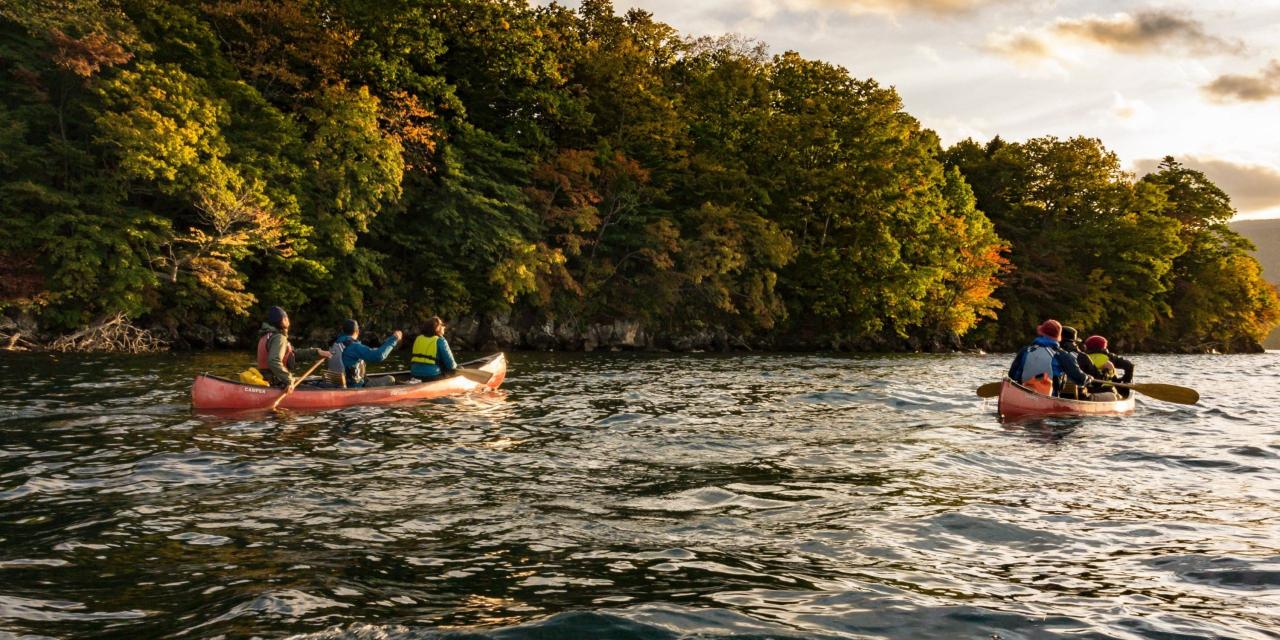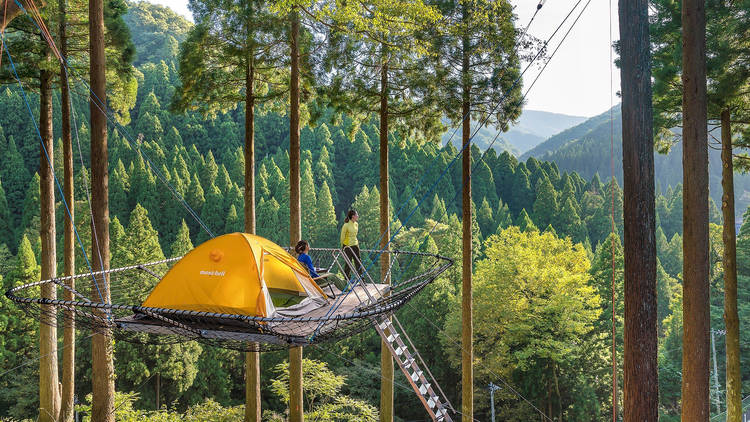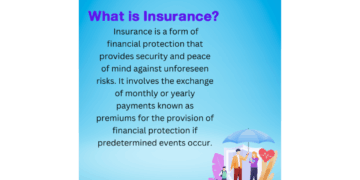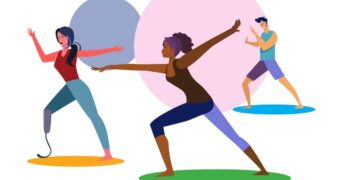The human spirit, at its core, is driven by an insatiable curiosity. It’s the spark that ignites exploration, fuels discovery, and propels us beyond the comfortable confines of the known. To truly go further in life, whether it’s through uncharted territories, complex intellectual landscapes, or the depths of our own potential, we must answer this fundamental call. This comprehensive article delves into the profound power of curiosity, providing a strategic roadmap for nurturing it, leveraging it to unlock new experiences, and navigating the exciting challenges of venturing deeper into life’s myriad possibilities. Prepare to expand your horizons and redefine what’s possible.
The Unquenchable Flame of Curiosity

What is it about curiosity that makes it such a powerful force in human development and experience? It’s more than just a fleeting interest; it’s a fundamental drive that underpins all learning and innovation.
A. The Engine of Knowledge and Understanding: Curiosity is the primary catalyst for acquiring new knowledge. It compels us to ask questions, seek answers, and delve into subjects we might otherwise ignore. This constant pursuit of understanding is how civilizations advance and individuals grow. Without it, learning stagnates.
B. Breaking Through Boundaries and Limitations: When we’re truly curious, we challenge existing norms, question assumptions, and push against perceived limitations. It’s the force that drives scientific breakthroughs, artistic innovation, and personal transformation. Curiosity helps us see past “impossible.”
C. Enhancing Engagement and Enjoyment: Life becomes infinitely richer when approached with curiosity. Ordinary moments are transformed into opportunities for discovery, and challenging tasks become engaging puzzles. This heightened level of engagement leads to greater enjoyment and fulfillment in everything we do.
D. Fostering Adaptability and Resilience: Venturing into unknown territory, whether physical or intellectual, inevitably brings unforeseen challenges. Curiosity provides the mental flexibility and open-mindedness needed to adapt to new situations, learn from mistakes, and bounce back from setbacks. It transforms obstacles into learning experiences.
E. Fueling Personal Growth and Self-Discovery: The process of exploring the unknown often reveals hidden strengths, passions, and aspects of ourselves we didn’t realize existed. Curiosity encourages introspection, prompts us to test our limits, and ultimately leads to a deeper understanding of our own capabilities and desires.
Diverse Pathways to Go Further
“Going further” doesn’t just mean physical travel. It encompasses a vast spectrum of experiences, each offering unique opportunities for growth and profound insights. Recognizing these diverse pathways helps you channel your curiosity effectively.
A. Geographical Expeditions: Venturing Into New Landscapes: These are the most common manifestations of curiosity, pushing physical boundaries.
1. Remote Wilderness Exploration: Trekking through untouched forests, navigating vast deserts, exploring uncharted caves, or climbing challenging peaks. These demand physical endurance, survival skills, and a deep respect for nature’s raw power. Consider extended backpacking trips in areas with minimal infrastructure.
2. Deep Cultural Immersion: Spending extended periods in foreign lands, not merely as a tourist, but as a temporary resident. This involves living with local families, learning the language fluently, participating in daily customs, and engaging with community life to truly understand a different way of being. Examples include undertaking a long-term language exchange program or volunteering for months in a foreign village.
3. Untraversed Historical Journeys: Delving into lesser-known historical narratives by visiting obscure archaeological sites, forgotten battlegrounds, or researching neglected archives. This involves piecing together fragments of the past to gain a deeper, more nuanced understanding of human history.
B. Intellectual Deep Dives: Exploring the Frontiers of Knowledge: Curiosity drives us to expand our understanding and mastery in various fields.
1. Mastering Complex Disciplines: Committing to the rigorous study and practice required to achieve expertise in a challenging academic or professional field, such as advanced mathematics, quantum physics, artificial intelligence, or specialized surgery. This involves years of dedicated learning and problem-solving.
2. Pioneering Research: Embarking on a scientific or academic research project that seeks to answer fundamental questions, discover new phenomena, or innovate within a specific domain. This pushes the boundaries of human knowledge itself. Terbuka di jendela baruLicensed by Google Scientist in protective suit working with cell diagram interface
3. Learning Multiple Languages: Dedicating oneself to becoming multilingual, opening up new worlds of literature, communication, and cultural understanding. This is a journey of linguistic and cognitive expansion.
C. Creative Exploration: Pushing Artistic and Innovative Boundaries: Curiosity fuels the creation of new forms and ideas.
1. Developing a New Art Form or Style: Experimenting with unconventional materials, techniques, or conceptual approaches to create entirely new forms of artistic expression that challenge traditional norms.
2. Inventing Groundbreaking Solutions: Using curiosity to identify unmet needs or unsolved problems, then dedicating oneself to inventing innovative products, technologies, or systems that address them.
3. Crafting a Magnum Opus: Committing to a long-term creative project that demands immense dedication, skill, and visionary thinking, such as writing an epic novel, composing a complex symphony, or designing an architectural marvel.
D. Inner Journeys: Delving Into the Self: Perhaps the most profound explorations occur within our own consciousness.
1. Spiritual Awakening and Contemplation: Undertaking a dedicated quest for deeper meaning, self-awareness, and connection to a higher purpose through practices like extended meditation retreats, philosophical study, or silent introspection.
2. Overcoming Deep-Seated Challenges: Embarking on a courageous journey of healing from past trauma, transforming limiting beliefs, or developing profound emotional intelligence. This requires immense self-compassion and perseverance.
3. Radical Self-Reinvention: Challenging one’s core identity, leaving behind old patterns or societal expectations to live a life more aligned with one’s authentic self, often involving significant career or lifestyle changes.
E. Societal and Environmental Impact: Journeys of Contribution: Curiosity about how to make a difference drives these explorations.
1. Long-Term Humanitarian Work: Dedicating oneself to living and working in underserved communities or crisis zones, exploring complex social issues firsthand and contributing to sustainable solutions.
2. Founding a Social Enterprise/Non-Profit: Channeling curiosity about systemic problems into creating innovative organizations that address them, requiring significant entrepreneurial spirit and dedication.
3. Deep Environmental Advocacy: Becoming an expert and an advocate for specific environmental issues, exploring scientific data, policy solutions, and community engagement strategies to drive significant change.
The Art of Strategic Planning for Curiosity

While curiosity is the engine, a strategic plan is the compass. Effective preparation transforms vague aspirations into actionable steps, allowing you to go further more effectively.
A. Pinpoint Your “Curiosity Spark”: What is it that truly fascinates you? What questions keep you up at night? Start by identifying a specific area, question, or challenge that genuinely ignites your curiosity. This deep interest will sustain you.
B. Conduct Extensive Research and Intelligence Gathering: Knowledge is the foundation of any deep exploration.
1. Primary Sources: Seek out direct experiences, interviews with experts, or original documents.
2. Diverse Perspectives: Don’t rely on a single source. Read widely, listen to different viewpoints, and challenge your own initial understanding.
3. Feasibility Study: For physical journeys, assess climate, safety, logistics. For intellectual journeys, assess prerequisites, learning paths, and resources.
4. Risk Assessment: Understand potential challenges, financial implications, and personal demands of your chosen path.
C. Resource Mobilization: Time, Financial, and Skill Capital: Going further often requires significant investment.
1. Dedicated Time Blocks: Schedule specific, uninterrupted time for your exploration. This might mean sacrificing other activities.
2. Strategic Financial Planning: Create a detailed budget. Research funding avenues like grants, scholarships, crowdfunding, or adjusting your spending habits. Consider the opportunity cost of your time.
3. Skill Development Plan: Identify any gaps in your knowledge or abilities and create a step-by-step plan to acquire the necessary skills. This might involve formal courses, mentorship, or self-study.
D. Building a Nurturing Ecosystem: Don’t embark on an epic curiosity journey in isolation.
1. Mentors and Guides: Seek out individuals who have already ventured deep into your chosen area of curiosity. Their wisdom can save you immense time and effort.
2. Community and Collaborators: Connect with like-minded individuals, online forums, or professional associations. Shared passion and mutual support are invaluable.
3. Accountability Partners: Find someone who can help keep you on track and provide encouragement when challenges arise.
E. Developing a Flexible “Roadmap” (Not a Rigid Itinerary):
1. Key Milestones: Identify major objectives or learning benchmarks.
2. Adaptive Strategy: Understand that your path will likely change as you uncover new information or face unexpected turns. Be prepared to pivot and adjust your course.
3. Contingency Planning: What will you do if you encounter significant obstacles (financial, health, logistical)? Having backup plans reduces stress.
Navigating Your Curious Pursuit
Once your plan is in motion, the true adventure of going further begins. This phase is about active engagement, resilience, and mindful observation.
A. Immersive Engagement: Dive Headfirst: Don’t just skim the surface.
1. Active Learning: Don’t passively consume information. Ask questions, experiment, try new things, and apply what you learn.
2. Sensory Awareness: Whether in a new place or grappling with a new concept, engage all your senses. Notice details, patterns, and subtle cues that others might miss.
3. Hands-On Experience: Whenever possible, seek direct, practical experience. This cements learning and fosters deeper understanding.
B. Embrace Iteration and Experimentation: Curiosity thrives on trying new things and learning from results.
1. Hypothesize and Test: Formulate ideas or solutions, then test them out. Observe the outcomes.
2. Learn from “Failures”: View setbacks or unexpected results not as failures, but as valuable data points that inform your next step. What did this teach me?
3. Refine and Adjust: Continuously refine your approach based on new insights and experiences.
C. Cultivate a Beginner’s Mindset (Shoshin): Even as you gain expertise, maintain humility and openness.
1. Question Assumptions: Always be willing to challenge your own existing beliefs and knowledge.
2. Stay Curious About the Fundamentals: Revisit basic concepts with fresh eyes.
3. Seek Diverse Perspectives: Actively listen to and learn from people with different backgrounds, experiences, or expertise.
D. Prioritize Sustained Well-being: Going further requires sustained energy.
1. Physical Health: Maintain good nutrition, sleep, and exercise habits. Your body is your vehicle for exploration.
2. Mental Recharge: Schedule regular breaks, engage in activities that relax you, and practice mindfulness to prevent burnout.
3. Emotional Check-ins: Regularly assess your emotional state. Don’t ignore signs of stress or overwhelm.
E. Document Your Discoveries and Evolution: Create a record of your journey.
1. Journaling: Regularly write down your insights, questions, challenges, and moments of breakthrough. This helps consolidate learning.
2. Organized Notes: Keep detailed notes for intellectual pursuits.
3. Visual Records: Use photos, videos, or sketches to capture experiences and observations.
Overcoming Challenges When Going Further
The path of deep curiosity and exploration is rarely linear. You will encounter obstacles, doubts, and moments of profound uncertainty.
A. When Faced with Confusion or Lack of Progress:
1. Break it Down: Large, complex problems or overwhelming amounts of information can be broken into smaller, more manageable parts.
2. Revisit Fundamentals: Sometimes, the solution lies in re-understanding basic principles.
3. Seek External Input: Reach out to your mentors, community, or even an online forum for guidance. A fresh perspective can often unlock solutions.
B. Battling Self-Doubt and Imposter Syndrome:
1. Acknowledge the Feeling: It’s normal to feel inadequate when pushing boundaries.
2. Focus on Progress, Not Perfection: Celebrate small wins and acknowledge how far you’ve come.
3. Remind Yourself of Your “Why”: Reconnect with your core motivation.
C. Dealing with Setbacks and “Failures”:
1. Reframe Failure as Feedback: Every setback is a learning opportunity. What new information did this provide?
2. Avoid Blame: Focus on solutions and adjustments rather than dwelling on mistakes.
3. Persevere: The most successful explorers and innovators are often those who persist longest through adversity.
D. Managing Isolation or Overwhelm:
1. Connect with Your Support Network: Don’t hesitate to reach out for emotional support or practical advice.
2. Schedule Breaks: Step away from your intense focus to recharge and gain perspective.
3. Mindfulness Practices: Use techniques like deep breathing or body scans to ground yourself in the present and reduce anxiety.
E. Financial or Logistical Hurdles:
1. Re-Evaluate Budget/Plan: Are there ways to cut costs, find new funding, or adjust your timeline?
2. Creative Problem-Solving: Think outside conventional solutions.
3. Seek Expert Advice: Consult financial advisors or logistical experts if the challenges are complex.
The Return with Riches
The journey of going further doesn’t end when you achieve a specific goal or return from a physical expedition. The true culmination is the integration of your discoveries into your transformed self and how you use them to enrich your future.
A. Deep Reflection and Assimilation: Take intentional time to process the profound changes within you.
1. Comprehensive Journaling: Review all your notes, observations, and reflections. What were the key turning points? What major insights did you gain?
2. Synthesize Knowledge: Organize and consolidate the vast amounts of information or experience you’ve acquired. Create a personal framework for understanding.
3. Self-Assessment: How have you changed as a person? What new skills, perspectives, or values have you gained?
B. Applying Newfound Wisdom and Skills: Don’t let your efforts go to waste.
1. Implement Practical Applications: Actively seek opportunities to use your new skills or knowledge in your daily life, work, or relationships.
2. Share Your Insights: Present your findings, teach others, or simply engage in meaningful conversations about what you’ve learned. This reinforces your understanding.
3. Influence Your Decision-Making: Let your expanded worldview and refined values guide your choices moving forward.
C. Managing Re-entry and Integration (if applicable): Returning to a familiar environment after a significant “deep dive” can be disorienting.
1. Be Patient with Yourself: It’s normal to feel a bit out of sync or to miss the intensity of your journey.
2. Reconnect Gradually: Ease back into your routines and social circles.
3. Find Local Outlets: Seek ways to continue exercising your new skills or pursuing your new interests in your immediate environment.
D. Inspiring Others Through Your Story: Your journey of going further can be a powerful motivator.
1. Authentic Storytelling: Share your challenges, breakthroughs, and the transformation you experienced with honesty and passion.
2. Mentorship and Guidance: If appropriate, offer to guide others who are starting their own curious explorations.
3. Content Creation: Consider writing a blog, a book, or creating a series of videos or podcasts to share your insights with a broader audience, thereby inspiring countless others.
E. Fueling the Next Iteration of Curiosity: The completion of one journey often sparks the desire for the next.
1. Maintain a “Curiosity List”: Keep a running record of new questions, areas of interest, or challenges you wish to explore.
2. Leverage New Confidence: Use the self-assurance and wisdom gained to pursue even more ambitious and profound explorations in the future.
3. Embrace Lifelong Learning: Recognize that life is an endless series of opportunities to go further, each step leading to greater understanding and fulfillment.
Conclusion
The call of curiosity is an invitation to live a life of depth, discovery, and continuous growth. It urges us to go further than we ever thought possible, beyond the superficial and into the heart of genuine experience. By strategically nurturing this innate drive, planning with foresight, embracing the challenges of the unknown, and thoughtfully integrating every insight, you don’t just accumulate knowledge; you transform your very being. So, listen closely to that persistent whisper of wonder within you. What question will you answer? What frontier will you cross? What hidden potential will you unlock? Your deepest, most rewarding journey begins now.







